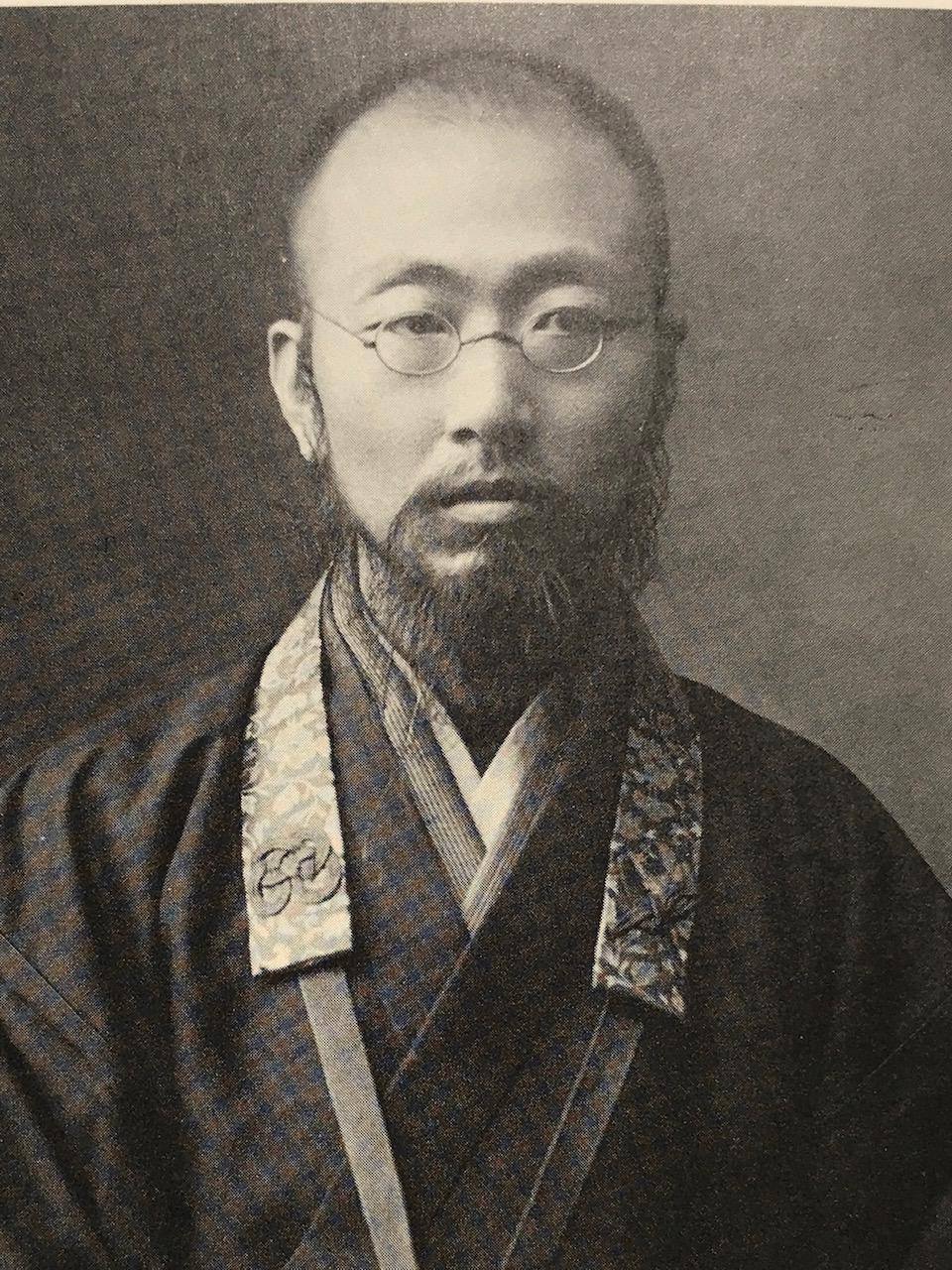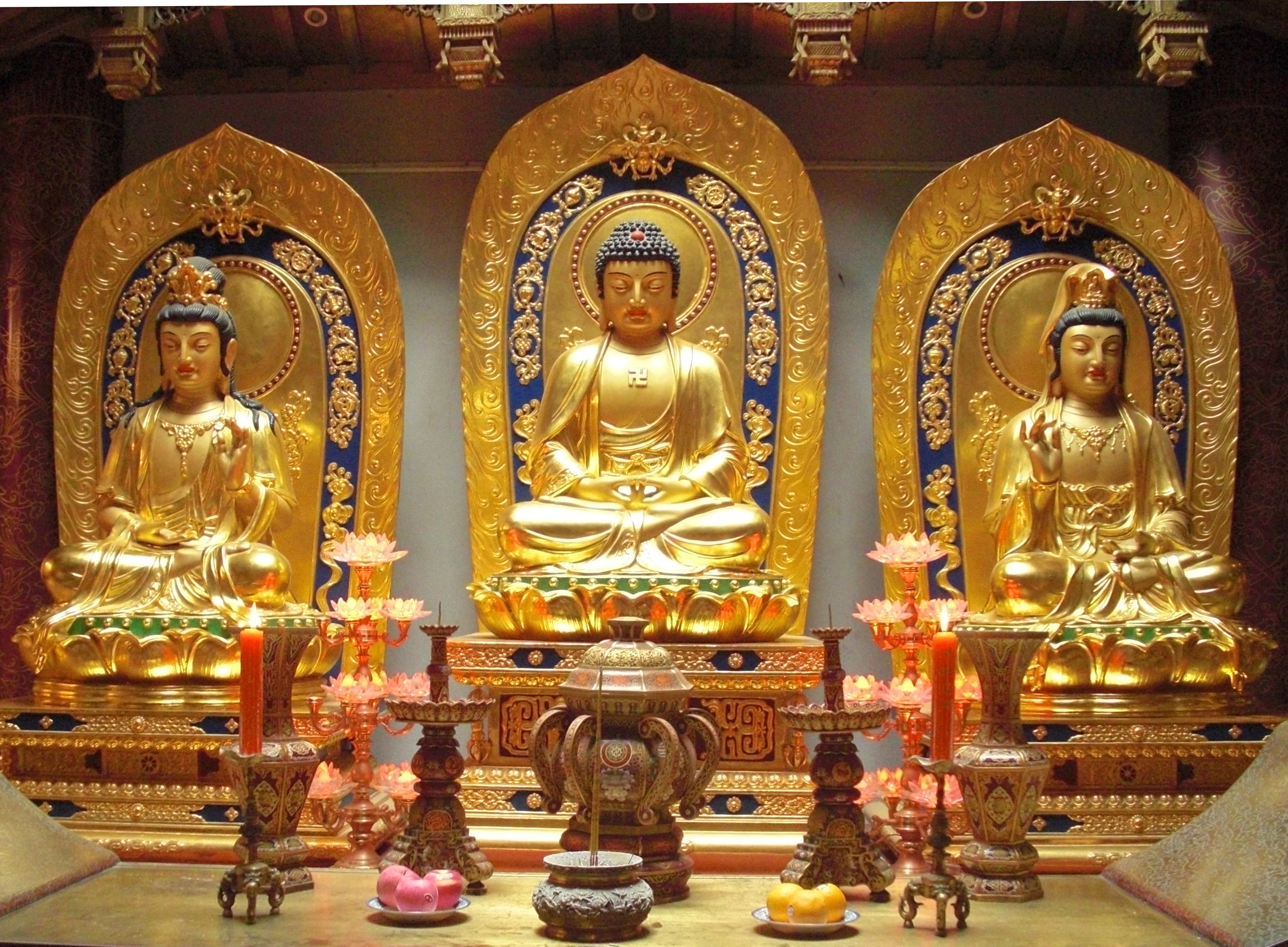|
Akegarasu Haya
was a Shin Buddhist priest in Ōtani-ha. For a decade he was a student of the Shin reformer Kiyozawa Manshi. Akegarasu was also a former head of administration of the Higashi Hongan-ji who was a major inspiration to the formation of the Dobokai Movement.''Popular Buddhism In Japan: Shin Buddhist Religion & Culture'' by Esben Andreasen, pp. 46,71,72 / University of Hawaii Press 1998, Early life He was born into a Jodo Shinshu temple family in Ishikawa prefecture and was the family's only son. Due to his father Enen's death when he was 10, his mother Taki struggled through the hardships associated with poverty and single parenthood while raising him. He received traditionalist Jōdo Shinshū teachings until his fateful meeting, and by the age of fourteen, the talented writer had published several books of 31-syllable poetry. Revival movement Rev. Kiyozawa Manshi, a great Japanese Shin reformer who taught Buddhism through life experience, met him on September 11, 1893, and be ... [...More Info...] [...Related Items...] OR: [Wikipedia] [Google] [Baidu] |
Shinjin
Shinjin (信心) is a central concept in Japanese Pure Land Buddhism which indicates a state of mind which totally entrusts oneself to Amida Buddha's other-power (Japanese: tariki), having utterly abandoned any form of self effort (Japanese: jiriki) or calculation (Japanese: hakarai). The term has been variously translated as "faith", "entrusting heart", "true entrusting", "mind of true faith", and so on. It is also often left untranslated in English language publications on Shin Buddhism.Friedrich, Daniel G"Shinjin, Faith, and Entrusting Heart: Notes on the Presentation of Shin Buddhism in English".��阪女学院大学紀要5号(2008) It is a key concept in the thought of Shinran (1173–1263), the founder of Jōdo Shinshū.Tanaka, Kenneth K"The Dimension of Wisdom in Shinran's Shinjin: An Experiential Perspective within the Context of Shinshu Theology."''Journal of Indian and Buddhist Studies''. Vol. 63, No. 3, March 2015. Shinran's concept of shinjin is rooted in the conce ... [...More Info...] [...Related Items...] OR: [Wikipedia] [Google] [Baidu] |
Pure Land Buddhists
Pure Land Buddhism or the Pure Land School ( zh, c=淨土宗, p=Jìngtǔzōng) is a broad branch of Mahayana, Mahayana Buddhism focused on achieving rebirth in a Pure land, Pure Land. It is one of the most widely practiced traditions of East Asian Buddhism, Buddhism in East Asia. It is also known as the "Lotus School" (Chinese language, Chinese: 蓮宗; pinyin: ''Liánzōng'') in China or the "Nianfo, Nembutsu school" in Japan. East Asian Pure Land mainly relies on three main Mahayana sutras, Mahayana scriptures: the ''Longer Sukhāvatīvyūha Sūtra, Sutra of Amitayus'', the ''Amitāyus Contemplation Sūtra, Contemplation Sutra'' and the ''Shorter Sukhāvatīvyūha Sūtra, Amitabha Sutra''. The Pure Land tradition is primarily focused on achieving rebirth in a Buddhahood, Buddha's "pure land", a superior place to spiritually train for full Buddhahood, where one can meet a Buddha face to face and study under them without any of the distractions or fears of our world.Williams, Pau ... [...More Info...] [...Related Items...] OR: [Wikipedia] [Google] [Baidu] |
1954 Deaths
Events January * January 3 – The Italian broadcaster RAI officially begins transmitting. * January 7 – Georgetown–IBM experiment: The first public demonstration of a machine translation system is held in New York, at the head office of IBM. * January 10 – BOAC Flight 781, a de Havilland Comet jet plane, disintegrates in mid-air due to metal fatigue, and crashes in the Mediterranean near Elba; all 35 people on board are killed. * January 12 – 1954 Blons avalanches, Avalanches in Austria kill more than 200. * January 15 – Mau Mau rebellion, Mau Mau leader Waruhiu Itote is captured in Kenya. * January 17 – In Socialist Federal Republic of Yugoslavia, Yugoslavia, Milovan Đilas, one of the leading members of the League of Communists of Yugoslavia, is relieved of his duties. * January 20 – The US-based National Negro Network is established, with 46 member radio stations. * January 21 – The first nuclear-powered submarine, the , is ... [...More Info...] [...Related Items...] OR: [Wikipedia] [Google] [Baidu] |
1877 Births
Events January * January 1 – Queen Victoria is proclaimed Empress of India by the Royal Titles Act 1876, introduced by Benjamin Disraeli, the Prime Minister of the United Kingdom . * January 8 – Great Sioux War of 1876: Battle of Wolf Mountain – Crazy Horse and his warriors fight their last battle with the United States Cavalry in Montana. * January 20 – The Conference of Constantinople ends, with Ottoman Turkey rejecting proposals of internal reform and Balkan provisions. * January 29 – The Satsuma Rebellion, a revolt of disaffected samurai in Japan, breaks out against the new imperial government; it lasts until September, when it is crushed by a professionally led army of draftees. February * February 17 – Major General Charles George Gordon of the British Army is appointed Governor-General of the Sudan. March * March 2 – Compromise of 1877: The 1876 United States presidential election is resolved with the selection of Ru ... [...More Info...] [...Related Items...] OR: [Wikipedia] [Google] [Baidu] |
Gyomay Kubose
Gyomay Kubose (June 21, 1905–March 29, 2000), born Masao Kubose was a Japanese-American Buddhist teacher. In 1944, after leaving the Heart Mountain Relocation Center, Heart Mountain internment camp, he founded the Chicago Buddhist Church, later renamed the Buddhist Temple of Chicago. Early life Although born in the United States, he spent a large amount of his youth in Japan. After graduating from University of California at Berkeley, Kubose moved back to Japan where, for five years, he studied under his spiritual instructor Haya Akegarasu, who was in turn a student of Kiyozawa Manshi, a Meiji period, Meiji-era reformer of Shin Buddhism. Buddhist Ideas Kubose was a non-sectarian Buddhist and followed Kiyozawa's message that Buddhism should be implemented as a personal voyage, and not merely a communal tradition as it had become prior to the Meiji era. He also extended a great amount of influence in North America, and traveled much of the United States on his lecture tours ... [...More Info...] [...Related Items...] OR: [Wikipedia] [Google] [Baidu] |
Primal Vow
In Pure Land Buddhism, the refers to a forty eight part vow that Amitābha Buddha made (long ago when he was a bodhisattva named Dharmakara). The term is often used to refer solely to the 18th part of the vow in particular (sometimes just called the 18th vow), which is very important for Pure Land Buddhist doctrine, especially in Japanese Buddhism. The term comes from the Sanskrit ''pūrva-praṇidhāna'', which means Past vow or Previous Vow. This term originally referred to any bodhisattva vows made by any bodhisattva in a past life, which retain a special spiritual power even after Buddhahood. Thus, the term can also refer to the past vows of other figures, such as is the twelve vows of Medicine Master Buddha. In Pure Land Buddhism however, the term specifically refers to the vow of Amitābha Buddha (Jp: Amida Butsu) found in the '' Infinite Life Sutra.'' The Japanese term ''Hongan'' is also the namesake of the Temple of the Original Vow ( Hongan-ji), a temple in Kyoto wh ... [...More Info...] [...Related Items...] OR: [Wikipedia] [Google] [Baidu] |
Ōtani-ha
Ōtani-ha (真宗大谷派, ''Shinshū Ōtani-ha'') is a Japanese Buddhist movement. It belongs to , also known as Shin Buddhism (or True Pure Land). The movement has approximately 5.5 million members. The headquarters of Ōtani-ha are in Kyoto, the mother temple is Higashi Honganji. The historic Shōman-ji, Nagoya also belongs to it. Otani University in belongs to Ōtani-ha. See also *[...More Info...] [...Related Items...] OR: [Wikipedia] [Google] [Baidu] |
Longer Sukhāvatīvyūha Sūtra
"Longer" is a song written and recorded by the American singer-songwriter Dan Fogelberg and released in 1979 by Full Moon Records and Epic Records. The song can be found on Fogelberg's 1979 album '' Phoenix''. It was also included on his 1982 greatest hits album as well as various other retrospective and compilation recordings. Fogelberg, who had released more rock oriented songs throughout the 1970s, jokingly described "Longer" in the liner notes to one of his retrospective albums as "the song that put me on the elevators."Hyatt, Wesley (1999). ''The Billboard Book of #1 Adult Contemporary Hits'' (Billboard Publications) He wrote the song while vacationing in Maui, "lounging in a hammock one night and looking up at the stars. It just seems this song was drifting around the universe, saw me, and decided I'd give it a good home." Accompanying Fogelberg's vocals is an acoustic guitar (played by the singer) as well as a flugelhorn solo by Jerry Hey. Lyrically, the song compares ... [...More Info...] [...Related Items...] OR: [Wikipedia] [Google] [Baidu] |






